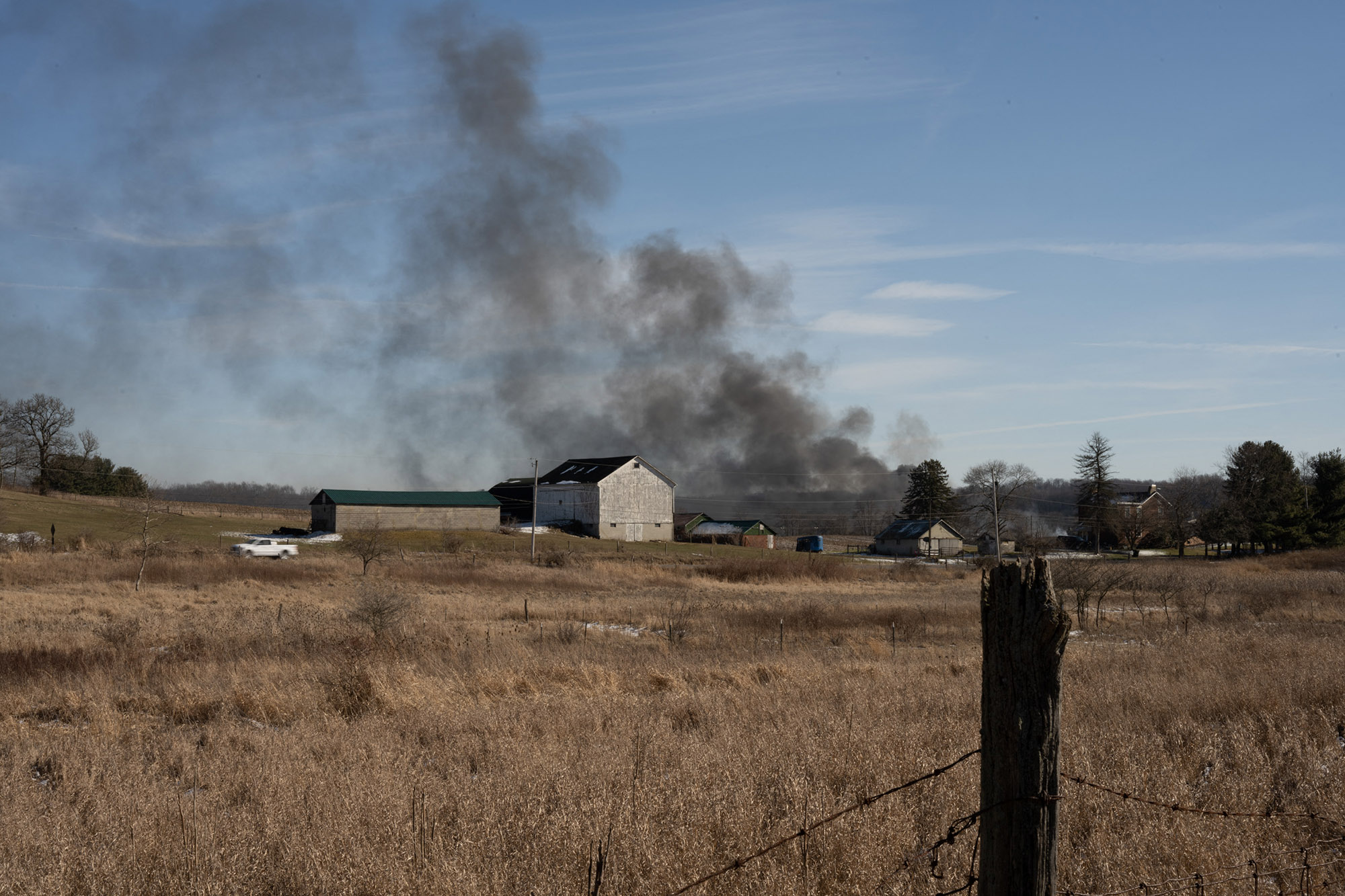Months-Long Lingering Of Toxic Chemicals After Ohio Train Derailment

Table of Contents
The Initial Disaster and Immediate Aftermath
On February 3, 2023, a Norfolk Southern freight train derailed in East Palestine, Ohio, releasing a plume of toxic chemicals into the surrounding environment. The derailment involved 38 cars, with several carrying hazardous materials, including vinyl chloride, butyl acrylate, and ethylhexyl acrylate. The immediate aftermath saw a controlled burn of vinyl chloride to prevent a potential explosion, releasing phosgene and hydrogen chloride into the air.
Initial cleanup efforts focused on containing the immediate spill and evacuating residents within a one-mile radius. However, reports of respiratory problems, headaches, eye irritation, and other health issues quickly emerged from residents and first responders.
- Quantities Released: The exact quantities of each chemical released remain subject to ongoing investigation, but significant amounts of vinyl chloride were involved.
- Immediate Health Issues: Reports included burning eyes, difficulty breathing, nausea, and skin irritation. Long-term health effects are still being assessed.
- Initial Government Response: The initial response drew criticism for its speed and transparency. Concerns were raised about the adequacy of the controlled burn and the communication with the affected community.
Persistent Contamination of Soil and Water
Months after the derailment, the lingering presence of toxic chemicals continues to contaminate the soil and water surrounding East Palestine. Testing results, while still incomplete, reveal concerning levels of various contaminants. The methods used for testing include soil sampling, water analysis from wells and surface water sources, and air quality monitoring.
- Specific Contaminants: Detected contaminants include vinyl chloride, butyl acrylate, and other volatile organic compounds (VOCs). Heavy metals are also under investigation.
- Levels of Contamination: Levels of certain contaminants have exceeded safety limits established by the Environmental Protection Agency (EPA).
- Groundwater Contamination: The potential for long-term groundwater contamination poses a severe threat to the region's water supply and ecosystems. The full extent of this contamination is still unknown.
Impact on Wildlife and Ecosystems
The chemical spill has had a devastating impact on local wildlife. Reports indicate dead fish in local waterways, as well as concerns about the impact on birds, mammals, and other animals. The potential for bioaccumulation of toxins in the food chain poses a significant risk to the entire ecosystem.
- Observed Effects: Dead fish and other aquatic organisms have been observed in local streams and rivers. The effects on terrestrial wildlife are still being assessed.
- Bioaccumulation: Toxins from the derailment can accumulate in the tissues of organisms, magnifying their effects as they move up the food chain.
- Long-Term Consequences: The long-term consequences for biodiversity and ecosystem health in the region could be substantial and lasting.
Long-Term Health Concerns for Residents
The months-long lingering of toxic chemicals raises serious concerns about the long-term health risks for residents of East Palestine and surrounding areas. Exposure to the released chemicals may lead to a range of health problems.
- Potential Cancers: Exposure to vinyl chloride and other carcinogens increases the risk of various cancers.
- Respiratory and Neurological Problems: Long-term respiratory issues, neurological disorders, and other chronic illnesses are potential long-term effects.
- Reproductive Health Concerns: Concerns exist regarding the potential impact on reproductive health.
- Long-Term Monitoring: Comprehensive and long-term health monitoring programs are crucial for assessing the health impacts on the community.
Government Response and Ongoing Investigations
The government's response to the derailment is ongoing, with investigations into the cause of the accident and the effectiveness of the cleanup efforts. The EPA is leading the investigation and cleanup, while other agencies are involved in health monitoring and regulatory oversight. Norfolk Southern Railway faces potential legal ramifications for its role in the disaster.
- Ongoing Investigations: Investigations are underway to determine the cause of the derailment and the extent of the environmental damage.
- Governmental Regulations: The incident has prompted calls for stricter regulations regarding the transportation of hazardous materials.
- Legal Actions: Lawsuits have been filed against Norfolk Southern, and further legal action is anticipated.
- Community Involvement: Community members and advocacy groups are playing a crucial role in demanding accountability and transparency.
Conclusion
The months-long lingering of toxic chemicals following the Ohio train derailment highlights the devastating and prolonged impact of such disasters. The persistent contamination of soil and water, the long-term health concerns for residents, and the damage to wildlife and ecosystems demand urgent attention. The findings from each section underscore the critical need for greater accountability, transparency, and stronger regulations to prevent future disasters involving the lingering of toxic chemicals. We must demand better safety standards for the transportation of hazardous materials and ensure adequate resources for comprehensive cleanup and health monitoring. Stay informed about the situation, support affected communities, and advocate for stronger regulations to prevent similar tragedies.

Featured Posts
-
 Resistance Mounts Car Dealers Reiterate Opposition To Ev Mandates
Apr 22, 2025
Resistance Mounts Car Dealers Reiterate Opposition To Ev Mandates
Apr 22, 2025 -
 Is Google Facing Its Biggest Threat Yet A Potential Breakup
Apr 22, 2025
Is Google Facing Its Biggest Threat Yet A Potential Breakup
Apr 22, 2025 -
 Ftc Probe Into Open Ai Implications For Ai Development And Use
Apr 22, 2025
Ftc Probe Into Open Ai Implications For Ai Development And Use
Apr 22, 2025 -
 Addressing High Stock Market Valuations Insights From Bof A
Apr 22, 2025
Addressing High Stock Market Valuations Insights From Bof A
Apr 22, 2025 -
 Hollywood Production Grinds To Halt As Actors Join Writers Strike
Apr 22, 2025
Hollywood Production Grinds To Halt As Actors Join Writers Strike
Apr 22, 2025
